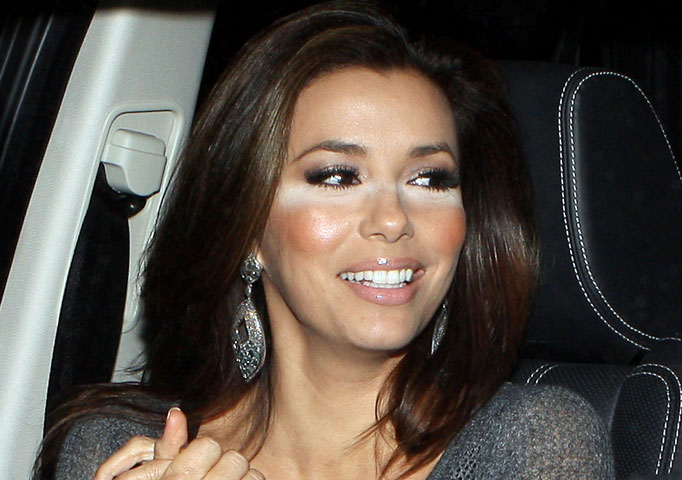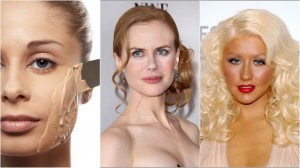So, I have my make-up done fairly often for acting and modelling things that I do in my spare time. Not a huge amount, but I’d say about 10 times a year give or take. One thing I’ve noticed, is that they are generally absolute shit. Keep in mind that this is about professional TV/studio sets, not every day make up.
I have had some wonderful make up people in the past, but some have been no better than a 10 year old with a Barbie make-up kit. I know you might think that just says a lot about the productions I’ve been a part of, but a few of these were actually for really professional jobs, so it’s not always a budget or inexperience (in hiring) thing.
You might be asking what makes me such a good judge. Well, I have done make-up on film sets in the past, I have studied photography, film and television as well as broadcasting. I have also been trained in make-up by L’Oreal and Chanel and was recently a brand ambassador for Clinique.
I do not consider myself a professional at all, by any means, but when a ‘make-up artist’ does things that are clear rookie errors, you just kind of wonder who hired them, and what their yardstick was. There are a lot of gripes in here about powder because it’s usually the most obvious mistake I see.
Make Up To Do and Not to Do. Don’t Do What Donny Don’t Does. Got It?
1. Do not use a latex sponge for liquid foundation. Why? Well, for one thing, you get zero coverage, and secondly you use way too much product. These sponges are exactly that, sponges. They suck liquid in, and it never comes back out. The result isn’t smooth. Use fingers or a foundation brush. You can finish the look later with a sponge if you need to blend.
2. Contour! No matter what the client, or the setting/character, you must contour the face. This works with the lighting to give depth to a face. Foundation is meant to reflect flaws, and it will also reflect any curves in your face. This means you will have no cheeks afterwards unless you add them back in. Ditto for eye sockets.
3. Always talk to the lighting person and the director. You need to know what the lighting temperature is. If you don’t know what I’m talking about, then learn. Not all make up will work for all lighting. This includes colours and shading. A perfect face in daylight doesn’t always translate in a studio.
4. Do not add powder to a face until final checks (unless a lot of blending is needed, then use a small amount for slippage). This is important, because there is generally a lot of waiting time in between make up, and actually recording a shot/taking a photo. If you powder right away, you can’t adjust coverage, add on more blush/contour/whatever and you risk clogging the model or actors skin and making it looks terrible and dusty on camera because you feel you have to add another layer before action. If you’ve already blended everything, then this is the perfect time to use that latex sponge! Sparingly tap or press powder to shiny areas, NOT dusted as an all over mask. Several layers of powder will make anyone look old and wrinkly. If you’ve used a minimum for blending and it still looks dusty, get a better product, or use a setting spray to soften the look.
5. Do not use a giant powder brush for powder touch ups. Again, use the latex sponge as you want to blot, not layer. If you need concealer or foundation, unfortunately you’ll have to remove some and re-apply. No problem if you’re experienced.
6. Define eyebrows and lashes. Especially on men, and especially if you’ve overdone the powder (read 4 and 5 dammit!!!). I don’t mean a shitload of mascara (unless that’s what is called for), powder will stick to hairs on the face, and create a dusty look. Have some clear brow gel or a wet cotton tip to get rid of it. Again, a setting spray is good for settling this afterwards. For ladies, the eyeline can be tough to pick up in a photo or TV environment if there is no liner. Again, it doesn’t have to be thick, just a line to show that there is one, otherwise features just bleed into each other.
7. Vaseline. Don’t fucking use it. It makes lipstick bleed, eyeliner run and skin break out. It doesn’t tame brows – it just makes them shiny and sopping. Under the heat of professional lighting, petroleum jelly melts and runs. Use something built for the purpose. Some call it a gimmick, but seriously, you’re messing with someone’s face, do some research and testing and figure out what actually works.
8. Look after the person’s skin. This means making sure their skin is clean and moisturised before make up, and after. Yes, that’s right – you are meant to remove it afterwards as well, unless requested not to. This is a job and most people react badly to thick make up day after day, and the longer it’s on, the worse off their skin will look in the long run.
OK, well that feels better to get that off my chest. Not a comprehensive guide or even always the right one, this is just based on my experiences and knowledge. I’m right about that stinking powder though, god it sucks.
*cover image of Eva Longoria sourced from http://www.thesun.co.uk/sol/homepage/woman/fashion/beauty/3334350/Worst-celebrity-make-up-mishaps.html

